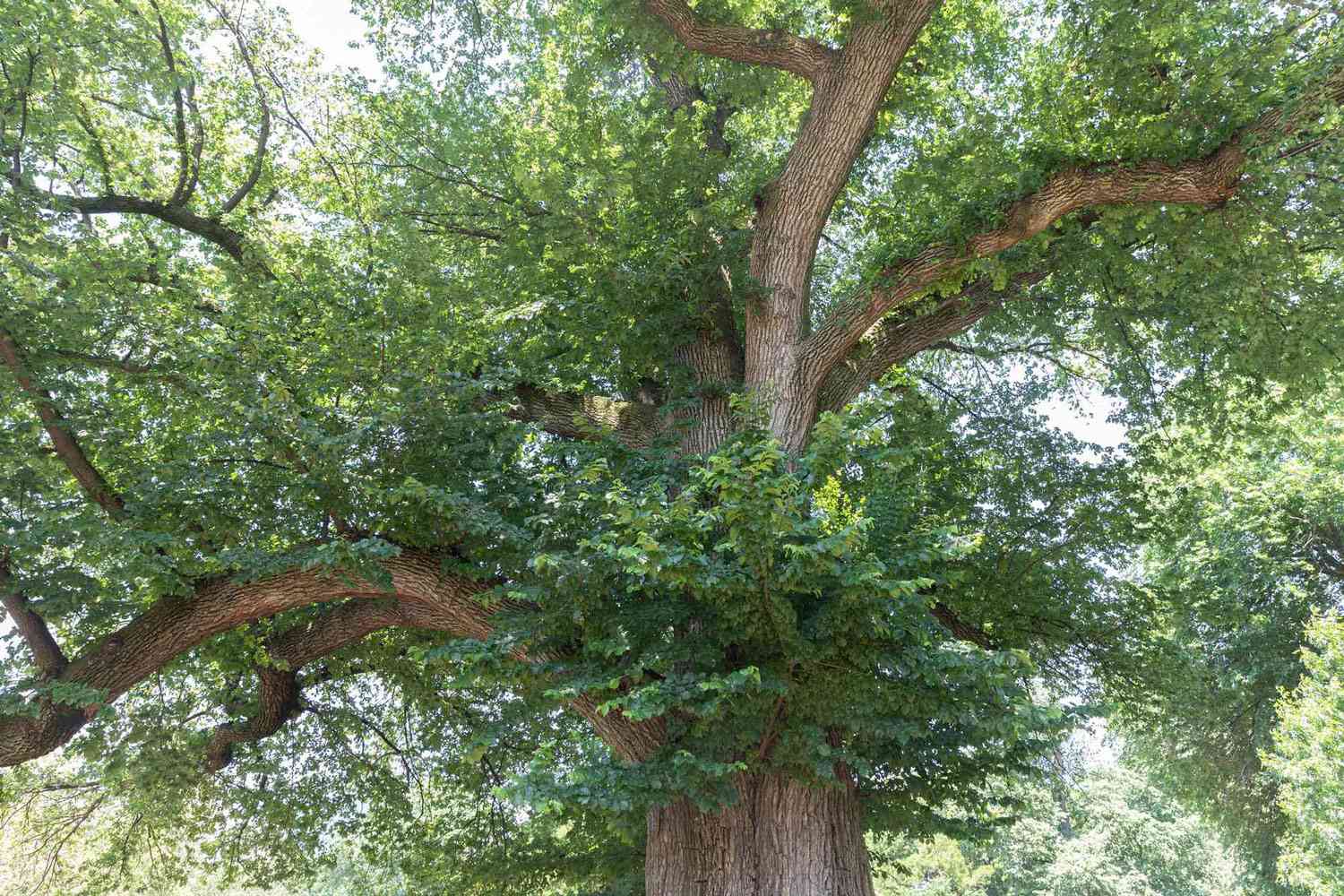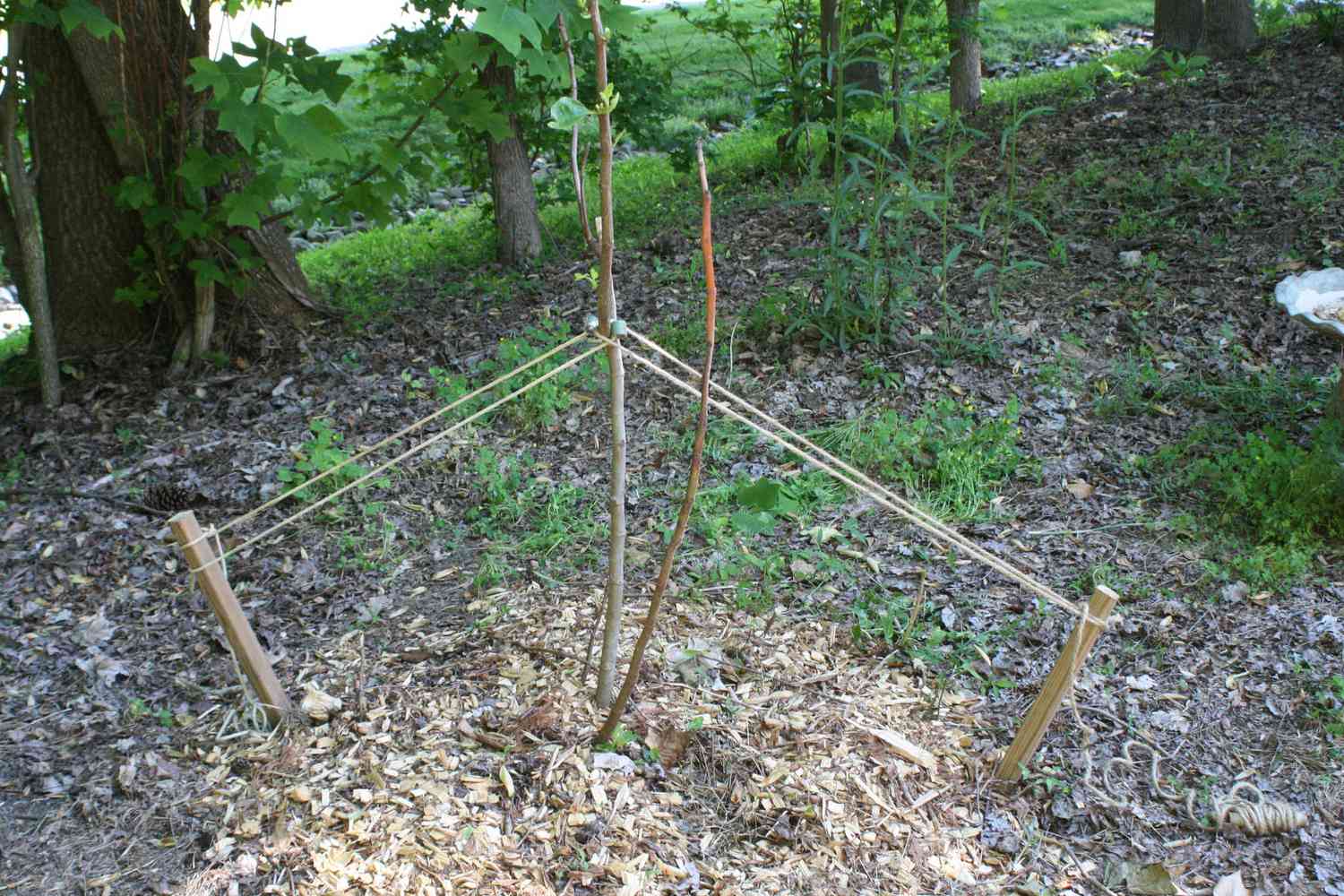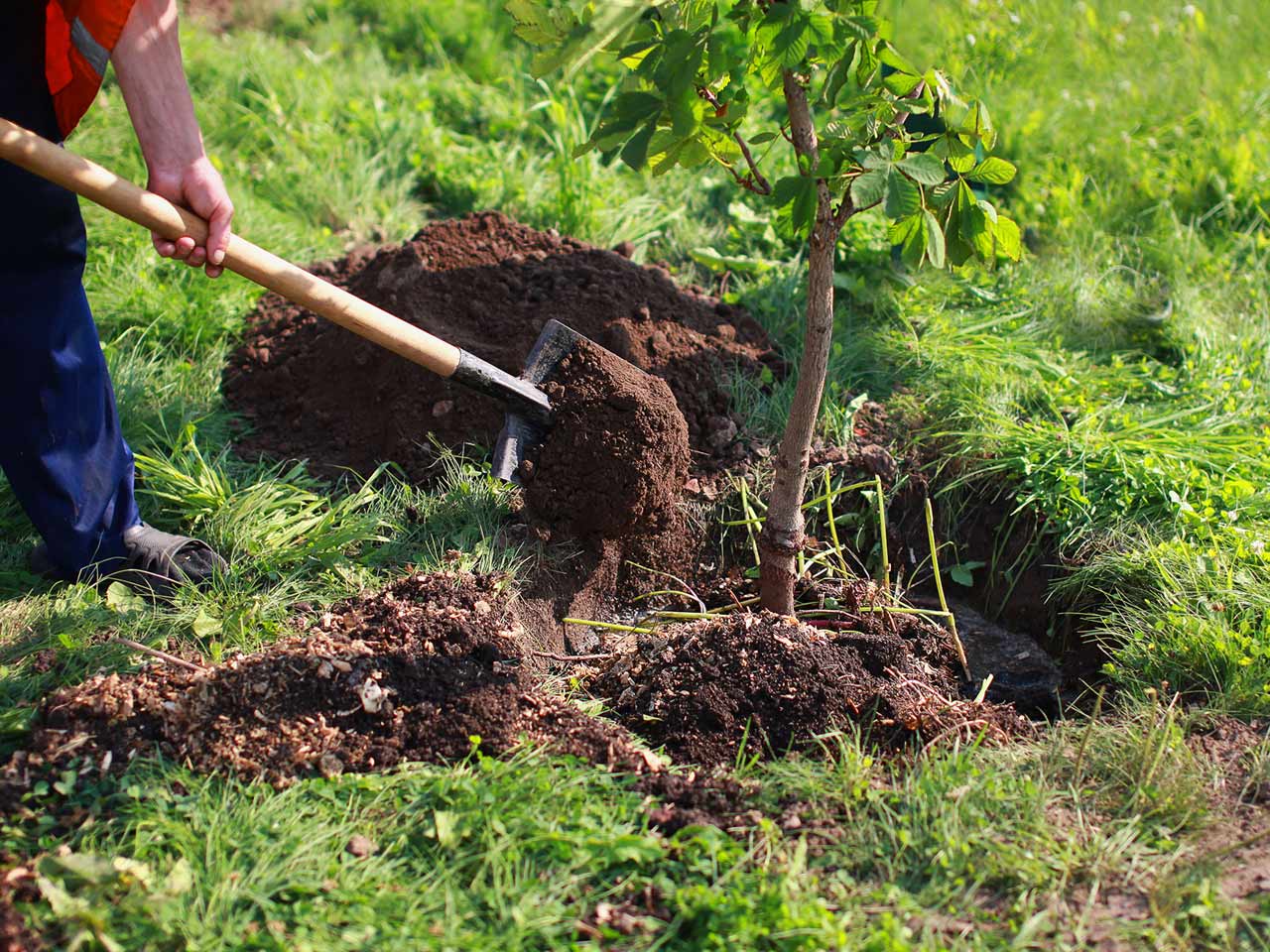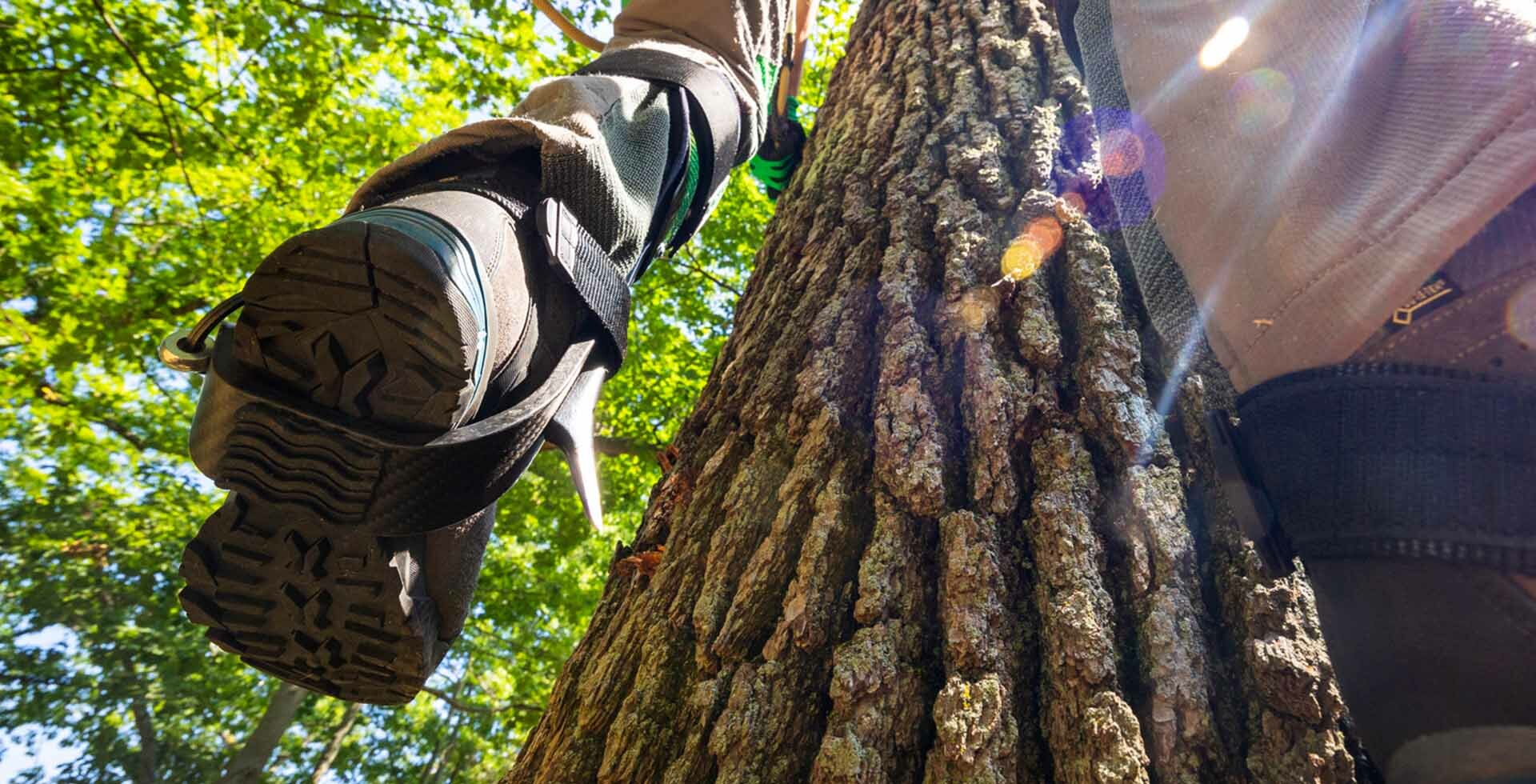Home>Gardening News and Trends>Latest News>How To Identify Elm Trees


Latest News
How To Identify Elm Trees
Published: October 29, 2023
Discover the latest news and tips on how to identify elm trees. Expand your knowledge and become an expert in tree identification with our informative articles.
(Many of the links in this article redirect to a specific reviewed product. Your purchase of these products through affiliate links helps to generate commission for Chicagolandgardening.com, at no extra cost. Learn more)
Table of Contents
- Introduction
- Characteristics of Elm Trees
- Leaf Structure
- Bark Texture
- Twig Arrangement
- Flower and Fruit Characteristics
- Growth Habit
- Common Species of Elm Trees
- Identifying Elm Trees by Location
- Identifying Elm Trees by Leaf Shape
- Identifying Elm Trees by Bark Texture
- Identifying Elm Trees by Twig Arrangement
- Identifying Elm Trees by Flowers and Fruits
- Conclusion
Introduction
Elm trees are majestic and iconic trees that can be found in various regions around the world. They are known for their tall stature, graceful branches, and beautiful foliage. Identifying elm trees can be a fascinating and rewarding experience for nature enthusiasts, botanists, and anyone who appreciates the beauty of trees.
There are several characteristics that can help in identifying elm trees, including leaf structure, bark texture, twig arrangement, flower and fruit characteristics, and growth habit. By understanding these key features, you can become more knowledgeable about elm trees and confidently distinguish them from other tree species.
In this guide, we will explore the different characteristics and techniques that can be used to identify elm trees. Whether you are walking in a park, exploring a forest, or even just observing trees in your neighborhood, this guide will provide you with the knowledge to recognize elm trees and appreciate their unique qualities.
It is important to note that elm trees belong to the genus Ulmus and encompass various species, each with its own distinct features. While there are similarities among these species, there may also be variations in certain characteristics. Therefore, this guide will provide a general overview of elm tree identification, but it is always recommended to consult additional resources or seek the expertise of a professional arborist for accurate identification.
So, let’s embark on our journey to discover the remarkable world of elm trees and learn how to identify them based on their distinguishing characteristics.
Characteristics of Elm Trees
Elm trees possess a set of distinct characteristics that are key indicators for their identification. By familiarizing yourself with these characteristics, you will be able to distinguish elm trees from other tree species with confidence.
Leaf Structure: One of the primary features of elm trees is their leaf structure. Elm leaves are typically alternate and simple, meaning that they are arranged in an alternating pattern along the branches and consist of a single leaflet. The shape of elm leaves can vary depending on the species, but they are commonly oval or elliptical with serrated edges.
Bark Texture: Another characteristic that aids in identifying elm trees is the texture of their bark. Elm bark is usually rough and deeply furrowed, often forming distinctive diamond-shaped patterns. However, it’s important to note that the bark texture can differ between species, with some elms displaying smoother or more patterned bark.
Twig Arrangement: Elm trees have an alternate twig arrangement, meaning that the twigs sprout from the branch nodes in an alternating pattern. This arrangement creates a zigzag appearance along the branches and is a helpful trait when identifying elm trees.
Flower and Fruit Characteristics: Elm trees produce small, inconspicuous flowers in early spring. These flowers are usually wind-pollinated and may not be easily noticeable. In late spring to early summer, elm trees develop small, winged fruits known as samaras. These samaras are flat and papery, and they disperse easily when the wind blows.
Growth Habit: Elm trees typically have a vase-shaped or umbrella-like growth habit, with a single trunk that branches out into a wide crown. This distinctive form makes them easily recognizable, especially in their mature stages.
By taking note of these key characteristics of elm trees, you will have a solid foundation for identifying these magnificent trees. However, it’s important to keep in mind that there are several different species of elm trees, and some variations may exist among them. Therefore, it’s always recommended to consult additional resources or consult an expert to accurately identify specific elm tree species.
Leaf Structure
The leaf structure of elm trees is a defining characteristic that can help in their identification. Elm leaves are typically alternate and simple, meaning they are arranged in an alternating pattern along the branches and consist of a single leaflet. Understanding the characteristics of elm tree leaves can aid in distinguishing them from other tree species.
Elm leaves vary in size and shape depending on the specific species. However, they commonly have an oval or elliptical shape with serrated or toothed edges. The size of the leaves can range from 2-6 inches long, with some species even exhibiting leaves that are longer or broader.
One key feature to look for when identifying elm leaves is their asymmetrical base. The leaf base is typically off-center or uneven, which adds to the distinctive appearance of the leaves. Additionally, elm leaves have prominent veins that run parallel to the leaf margins, giving them a veined or ribbed texture.
Another important aspect of elm leaf identification is their arrangement on the twigs. Elm trees have an alternate leaf arrangement, meaning the leaves emerge from the twig nodes in an alternating pattern. This creates a zigzag pattern along the branches and is a characteristic feature of elm trees.
In terms of color, elm leaves can vary from dark green to light green, with some species displaying a slight bluish tint. During the autumn months, the leaves of elm trees often turn shades of yellow, orange, or brown before falling off.
It’s worth noting that the leaf characteristics mentioned here are general traits of elm trees. However, different species of elms may exhibit variations in leaf shape, size, and texture. Some elm species may even have leaves that are more elongated or have fewer serrations. Therefore, it is advised to consult additional resources or seek professional guidance for accurate identification of specific elm tree species based on their leaf structure.
By observing and understanding the leaf structure of elm trees, you can develop the skills needed to identify these magnificent trees and appreciate their unique beauty in the natural environment.
Bark Texture
The texture of the bark is an important characteristic to consider when identifying elm trees. Elm bark is known for its distinctive texture, which can vary depending on the species. By examining the bark texture, you can gain valuable clues for identifying elm trees.
Generally, the bark of elm trees is rough and deeply furrowed. It forms ridges and grooves that give it a rugged appearance. The furrows often create diamond-shaped patterns on the trunk and branches. This unique bark texture is a key feature that sets elm trees apart from other tree species.
However, it’s important to note that bark texture can differ between species and can even vary from tree to tree within the same species. Some elm species, such as the American elm (Ulmus americana), have visibly rough and deeply furrowed bark, while others may have smoother bark with less pronounced ridges.
In addition to the rough texture, the color of elm bark can provide additional clues for identification. Elm bark is typically gray or gray-brown in color, but it can also have hints of reddish-brown or even greenish tones in some species.
When identifying elm trees based on bark texture, it’s important to consider the age of the tree. Younger elm trees may have smoother bark compared to older, mature trees. As the tree ages, the bark tends to become more rough and deeply furrowed.
Overall, the bark texture of elm trees is a helpful characteristic in their identification. The rough and deeply furrowed bark, along with the diamond-shaped patterns, is a distinct feature that sets elm trees apart from many other tree species. By paying attention to the bark texture and considering the variations among different elm species, you can confidently identify these majestic trees in their natural habitat.
Twig Arrangement
The arrangement of twigs on a tree can provide valuable insights for identifying elm trees. Elm trees have a unique twig arrangement known as alternate arrangement, which is an important characteristic to consider when distinguishing elm trees from other species.
In alternate twig arrangement, the twigs arise from the branch nodes in an alternating pattern. This creates a zigzag appearance along the branches, as opposed to a straight or clustered arrangement seen in some other tree species. The alternating pattern of the twigs is particularly evident during the winter months when the leaves have fallen off.
Observing the zigzag pattern of the twigs can help you recognize elm trees even before the leaves emerge in spring. This distinguishing trait is consistent across many species of elms and can be a reliable indicator for identifying them.
When examining the twigs closely, you may also notice small buds at the base of each leaf scar. These buds, known as lateral buds, are another characteristic of elm trees. They are generally small and pointed, and they give rise to new growth in the following spring.
It is worth noting that twig arrangement can vary across different species of elm trees, with some species having more pronounced zigzag patterns than others. However, the alternate arrangement of twigs remains a key feature that sets elm trees apart from many other tree species.
By familiarizing yourself with the twig arrangement of elm trees and recognizing the alternating pattern along the branches, you can confidently identify these magnificent trees in their dormant state during winter or early spring.
Flower and Fruit Characteristics
The flower and fruit characteristics of elm trees are important factors to consider when identifying these trees. Although the flowers of elm trees may not always be noticeable, the fruits, known as samaras, can provide valuable clues for identification.
Elm trees produce small, inconspicuous flowers in early spring before the leaves fully emerge. The flowers are typically wind-pollinated and are not highly showy. They may be small and greenish in color, often grouped together in clusters. While the flowers may not be the most prominent feature for identification, their presence during the appropriate season can help confirm the tree as an elm.
Elm trees are known for their distinct winged fruits called samaras. These fruits are flat, papery, and elongated, resembling small paddle-like structures. Each samara contains a single seed and is equipped with a wing-like structure that aids in wind dispersal.
The samaras of elm trees are often characteristic of the species and can vary in size and shape depending on the specific type of elm. They typically develop in late spring to early summer and can persist on the trees throughout the summer months. When the wind blows, the samaras detach from the branches and flutter down to the ground.
By examining the samaras, you can gather significant clues for identifying a tree as an elm. However, it’s important to note that not all elm species produce abundant samaras, and the presence and characteristics of the fruits can vary. Some elm species may produce smaller or less abundant samaras compared to others.
While the flower and fruit characteristics can be helpful in identifying elm trees, it’s important to remember that these features may not always be readily observable. Therefore, it is recommended to consider a combination of other distinguishing traits such as leaf structure, bark texture, and twig arrangement for accurate identification.
By being attentive to the flower and fruit characteristics of elm trees, you can enhance your ability to identify these magnificent trees and appreciate their unique reproductive features in the natural environment.
Growth Habit
The growth habit of elm trees is a distinctive characteristic that can aid in their identification. Elm trees typically exhibit a vase-shaped or umbrella-like growth habit, which sets them apart from many other tree species.
Elm trees have a single trunk that extends upwards, branching out into a wide canopy. The branches form an arching pattern, giving the tree its characteristic vase-like shape. This growth habit provides a graceful and elegant appearance, making elm trees instantly recognizable.
The branches of elm trees are typically well-spaced, allowing for ample sunlight to penetrate through the canopy. This results in a dappled shade underneath the tree, creating a pleasant environment below. The leafy canopy provides shade and protection to the lower branches, culminating in a beautifully balanced structure.
Elm trees can reach impressive heights, with some species growing over 100 feet tall. Their tall stature and broad canopy make them a prominent feature in landscapes, parks, and urban areas where they are often planted for their aesthetic value and shade-giving qualities.
As with any characteristic, it’s important to consider that growth habit can vary among different species of elm trees. Some species may exhibit a more compact or narrow growth habit, while others may have a broader and more open structure. Additionally, the growth habit may also be influenced by external factors such as environmental conditions and available space for growth.
Identifying elm trees based on their growth habit requires observing their overall shape and branching pattern. By recognizing the vase-shaped or umbrella-like form, along with the well-spaced branches and arching pattern, you can confidently identify these majestic trees.
Understanding the growth habit of elm trees not only aids in their identification but also allows you to appreciate their unique architectural beauty and the ecosystem they create within their canopies.
Common Species of Elm Trees
The genus Ulmus encompasses numerous species of elm trees found across the globe. Each species has its own distinct characteristics, making it vital to be familiar with the common types of elm trees for accurate identification. Here are some of the most well-known species:
- American Elm (Ulmus americana): The American Elm is a native tree in North America and is known for its tall, arching branches and vase-shaped growth habit. Its leaves are typically oval-shaped with serrated edges, and its bark is deeply furrowed.
- English Elm (Ulmus procera): Also called the Atinian Elm or Common Elm, the English Elm originated in Europe. It has a similar growth habit to the American Elm but often has a broader and more rounded canopy. The leaves of the English Elm are serrated, and its bark is gray and somewhat smoother compared to other elm species.
- Siberian Elm (Ulmus pumila): The Siberian Elm is a hardy species native to Asia. It has a smaller stature and a more upright growth habit compared to other elms. Its leaves are small, ovate, and have double-serrated edges. The bark of the Siberian Elm is gray-brown and develops long, ridged furrows as it matures.
- Chinese Elm (Ulmus parvifolia): Originally from East Asia, the Chinese Elm is a popular ornamental tree known for its graceful weeping habit and small, elliptical leaves with serrated edges. Its bark is mottled with a mixture of gray, green, and brown tones, creating an attractive visual appeal.
- Cedar Elm (Ulmus crassifolia): Native to the southern United States, the Cedar Elm is a medium-sized tree with a spreading canopy and rough, deeply furrowed bark. Its leaves are small, ovate, and have double-serrated edges. The Cedar Elm is known for its tolerance to drought and its ability to thrive in harsh climates.
These are just a few examples of the common species of elm trees. It’s important to note that there are many other species of elms, including hybrid varieties. Each elm species may have variations in leaf shape, bark texture, and growth habit, which can aid in their identification.
By familiarizing yourself with the characteristics of these common species, you can develop a better understanding of elm tree identification and appreciate the diverse beauty of these remarkable trees that populate our landscapes and contribute to the natural ecosystem.
Identifying Elm Trees by Location
Location can be a useful factor when it comes to identifying elm trees. Different elm species have specific geographical distributions, and knowing the typical range of a particular species can narrow down the possibilities for identification. Here are some general guidelines for identifying elm trees based on their location:
Native Range: One way to identify elm trees is by understanding their native range. For example, the American Elm (Ulmus americana) is native to North America, while the English Elm (Ulmus procera) is native to Europe. By being familiar with the native ranges of different elm species, you can eliminate certain species that are not likely to be found in your location.
Introduced Species: In addition to native elms, there are many species of elms that have been introduced to various parts of the world. These introduced species, such as the Chinese Elm (Ulmus parvifolia) or the Siberian Elm (Ulmus pumila), may have different characteristics and distribution patterns. By understanding which introduced species are commonly found in your area, you can narrow down the possibilities for identification.
Climate Considerations: Climate can also play a role in identifying elm trees. Certain species of elms thrive in specific climatic conditions. For example, the Cedar Elm (Ulmus crassifolia) is known for its ability to tolerate drought and grows well in the southern United States. By considering the climate of your location, you can make educated guesses about the potential elm species present in the area.
Local Habitats: Elm trees often have preferred habitats that can provide further clues for identification. Some species, such as the Siberian Elm, thrive in urban areas and can often be found in cities or along streets. Others, like the American Elm, prefer rich, moist soils and are commonly found near rivers or in bottomland forests. Paying attention to the local habitats and environments can help narrow down the potential species of elm trees in your area.
It’s important to note that while location can be a helpful factor, there can still be variations and overlap in elm tree distributions. Some species may have been introduced beyond their native ranges and may be found in unexpected locations. Additionally, natural factors and human intervention can influence the spread and distribution of elm trees.
By considering the location and the native or introduced status of different elm species, you can make informed observations and deductions when identifying elm trees in your area. Consulting local field guides, experts, or botanical resources specific to your region can further enhance your ability to accurately identify these magnificent trees.
Identifying Elm Trees by Leaf Shape
The shape of the leaves can be a defining characteristic when it comes to identifying elm trees. Elm tree leaves exhibit a range of shapes, ranging from oval to elliptical to asymmetric. Understanding the variations in leaf shape can help in accurately identifying elm trees. Here are some key leaf shapes commonly associated with elm trees:
- Oval-shaped: Many elm species have oval-shaped leaves, which are wider in the middle and taper towards the ends. These leaves may have smooth or slightly serrated edges. The American Elm, English Elm, and Chinese Elm are examples of elm species that typically display oval-shaped leaves.
- Elliptical-shaped: Another common leaf shape seen in elm trees is elliptical. Elliptical leaves have a longer shape, with parallel sides and rounded ends. This shape gives the leaves a narrow appearance. The Siberian Elm and the Cedar Elm are examples of elm species that often have elliptical-shaped leaves.
- Asymmetric-shaped: Elm tree leaves can also exhibit an asymmetric shape. The leaf base is usually off-center or uneven, creating an asymmetrical appearance. This unique characteristic can be observed in many elm species, including the American Elm and the English Elm.
It’s important to note that leaf shape can vary not only between different elm species but also within the same species. Factors such as age, growing conditions, and genetic variations can influence leaf shape. The leaves of young elm trees may have slightly different shapes compared to fully matured trees.
In addition to the shape, it’s also worth considering the size and arrangement of the leaves. The size of elm leaves can range from 2-6 inches long, although some species may have leaves that are longer or broader. The leaves are typically arranged in an alternate pattern along the twigs, which means they emerge in a staggered and alternating pattern.
When identifying elm trees based on leaf shape, it’s helpful to compare the characteristics of the leaves with known elm species in your region. Field guides, botanical resources, or the assistance of an arborist can provide valuable information for accurate identification.
By paying attention to the shape, size, and arrangement of the leaves, you can enhance your ability to identify elm trees and further appreciate the uniqueness and diversity of these remarkable trees.
Identifying Elm Trees by Bark Texture
The texture of the bark is a crucial characteristic when it comes to identifying elm trees. Elm tree bark has distinct features that can vary among species. By examining the texture of the bark, you can gain valuable clues for accurate identification. Here are some key points to consider when identifying elm trees based on their bark texture:
- Rough and Furrowed Bark: The bark of elm trees is generally rough and deeply furrowed. It forms ridges and grooves that create a rugged appearance. This characteristic texture is one of the most prominent features of elm trees and can help distinguish them from other tree species.
- Diamond-Shaped Patterns: The deeply furrowed bark of elm trees often forms distinctive diamond-shaped patterns on the trunk and branches. These patterns, created by the interlocking ridges, are unique to elm trees and can be a reliable identifier.
- Bark Color: Elm tree bark typically has a gray or gray-brown color. However, the color can also have variations, ranging from reddish-brown to greenish tones. It’s important to consider the range of bark colors within different species of elms and compare them to the specific tree you are observing.
- Bark Texture Variations: While rough and deeply furrowed bark is a common characteristic of elm trees, it’s worth noting that the bark texture can vary among species. Some elm species have smoother bark with less pronounced ridges, while others may have a more patterned or even peeling bark texture.
When identifying elm trees based on bark texture, it’s essential to consider the overall appearance and variation within the species. Keep in mind that the bark texture may change as the tree matures, with younger elm trees often having smoother bark that becomes rough and furrowed as they age.
Comparing the observed bark texture to known characteristics of elm species in your region can aid in accurate identification. Consulting field guides, botanical resources, or seeking expert advice can further enhance your ability to identify elm trees based on their distinct bark texture.
By paying attention to the rough and furrowed bark, diamond-shaped patterns, and color variations, you can confidently identify elm trees and appreciate the unique beauty and diversity of this remarkable tree species.
Identifying Elm Trees by Twig Arrangement
The arrangement of twigs on a tree can provide valuable clues for identifying elm trees. Elm trees have a distinctive twig arrangement known as alternate arrangement, which helps set them apart from other tree species. Understanding this characteristic can assist in accurate identification. Here are some key points to consider when identifying elm trees based on their twig arrangement:
- Alternate Twig Arrangement: Elm trees have an alternate twig arrangement, meaning that the twigs emerge from the branch nodes in an alternating pattern. This creates a zigzag appearance along the branches, as opposed to a straight or clustered arrangement seen in some other tree species. The alternating pattern is particularly evident during the winter months when the leaves have fallen off.
- Zigzag Pattern: The alternate twig arrangement of elm trees creates a distinct zigzag pattern along the branches. This pattern provides a recognizable and consistent characteristic for identifying elm trees, even when other distinguishing features are not readily visible.
- Lateral Buds: Elm trees also have small buds situated at the base of each leaf scar. These buds, known as lateral buds, are typically small and pointed. They give rise to new growth in the following spring. Observing the presence of these buds along the twigs can further confirm the tree as an elm.
It’s important to note that while alternate twig arrangement is a common trait of elm trees, there can be variations in twig structure and arrangement among different species. Some species may exhibit more pronounced zigzag patterns than others, or the degree of zigzag may be more subtle. However, the overall alternate pattern remains a key feature for identifying elm trees.
When identifying elm trees by their twig arrangement, it’s helpful to compare the observed pattern to known characteristics of elm species in your area. Field guides, botanical resources, or the assistance of an arborist can provide valuable information for accurate identification.
By paying attention to the alternating pattern and the presence of lateral buds along the twigs, you can enhance your ability to identify elm trees and appreciate the uniqueness and diverse patterns they exhibit.
Identifying Elm Trees by Flowers and Fruits
Flower and fruit characteristics can provide valuable clues when it comes to identifying elm trees. While the flowers of elm trees may not always be readily noticeable, the fruits, known as samaras, can be distinctive features that aid in accurate identification. Here are key points to consider when identifying elm trees based on their flowers and fruits:
- Inconspicuous Flowers: Elm trees produce small, inconspicuous flowers in early spring before the leaves fully emerge. These flowers are typically wind-pollinated and are not highly showy or colorful. They may appear as small clusters or individual flowers on the tree. Although the flowers may not be the most prominent feature for identification, their presence during the appropriate season can help confirm the tree as an elm.
- Winged Fruits: Elm trees produce distinctive fruits called samaras. These samaras are flat, papery structures that resemble small paddle-like wings. Each samara contains a single seed and is adapted for wind dispersal. The samaras usually develop in late spring to early summer and are found in clusters or individually on the tree. When the wind blows, the samaras detach from the branches and flutter down to the ground.
- Fruit Variation: It’s important to note that the appearance and abundance of fruits can vary among different elm species. Some species produce an abundance of samaras that are easily noticeable, while others may have fewer or less conspicuous fruits. Additionally, the size and shape of the samaras can vary between species, offering additional clues for identification.
When identifying elm trees based on their flowers and fruits, it’s helpful to compare the observed characteristics to known features of elm species in your region. Field guides, botanical resources, or consultation with experts can provide valuable information for accurate identification.
While observing the flowers and fruits of elm trees can be advantageous, it’s important to note that these features may not always be present or easily observable. Therefore, incorporating other distinguishing traits, such as leaf structure, bark texture, twig arrangement, or growth habit, can help ensure accurate identification.
By paying attention to the inconspicuous flowers and the unique winged fruits, you can enhance your ability to identify and appreciate the diversity of elm trees in their natural habitat.
Conclusion
Identifying elm trees can be an engaging and rewarding experience for nature enthusiasts, botanists, and anyone with a love for trees. By understanding the key characteristics of elm trees, including leaf structure, bark texture, twig arrangement, flower and fruit characteristics, and growth habit, you can confidently distinguish them from other tree species.
Leaf structure is an important feature to consider when identifying elm trees. Observing the shape, size, and arrangement of the leaves can provide valuable insight into the specific elm species. Additionally, paying attention to the bark texture can offer clues for accurate identification. The rough and furrowed bark, along with the distinctive diamond-shaped patterns, is a distinct feature of elm trees.
The twig arrangement of elm trees, characterized by an alternate pattern along the branches, creates a zigzag appearance. This unique feature is consistent across many species and can help distinguish elm trees even in their dormant state.
Flower and fruit characteristics, although often inconspicuous, can aid in the identification of elm trees. Elm trees produce small, wind-pollinated flowers and distinctive flat, papery-winged fruits known as samaras. While the appearance and abundance of fruits may vary among species, their presence during the appropriate season can confirm the tree as an elm.
Lastly, the growth habit of elm trees, with their vase-shaped or umbrella-like form, is a visually striking feature. This growth pattern, along with the well-spaced branches and arching pattern, is characteristic of elm trees.
It’s important to note that there are many species of elm trees, each with its own unique characteristics. While this guide provides a general overview, consulting additional resources, field guides, or seeking professional advice is recommended for accurate identification, especially when dealing with specific species or variations.
By utilizing these techniques and characteristics, you can enhance your ability to identify elm trees and appreciate their beauty and significance in various ecosystems and landscapes.
So, embark on your journey to explore the remarkable world of elm trees, sharpen your observational skills, and enjoy the process of identifying these magnificent trees in their natural environments.






